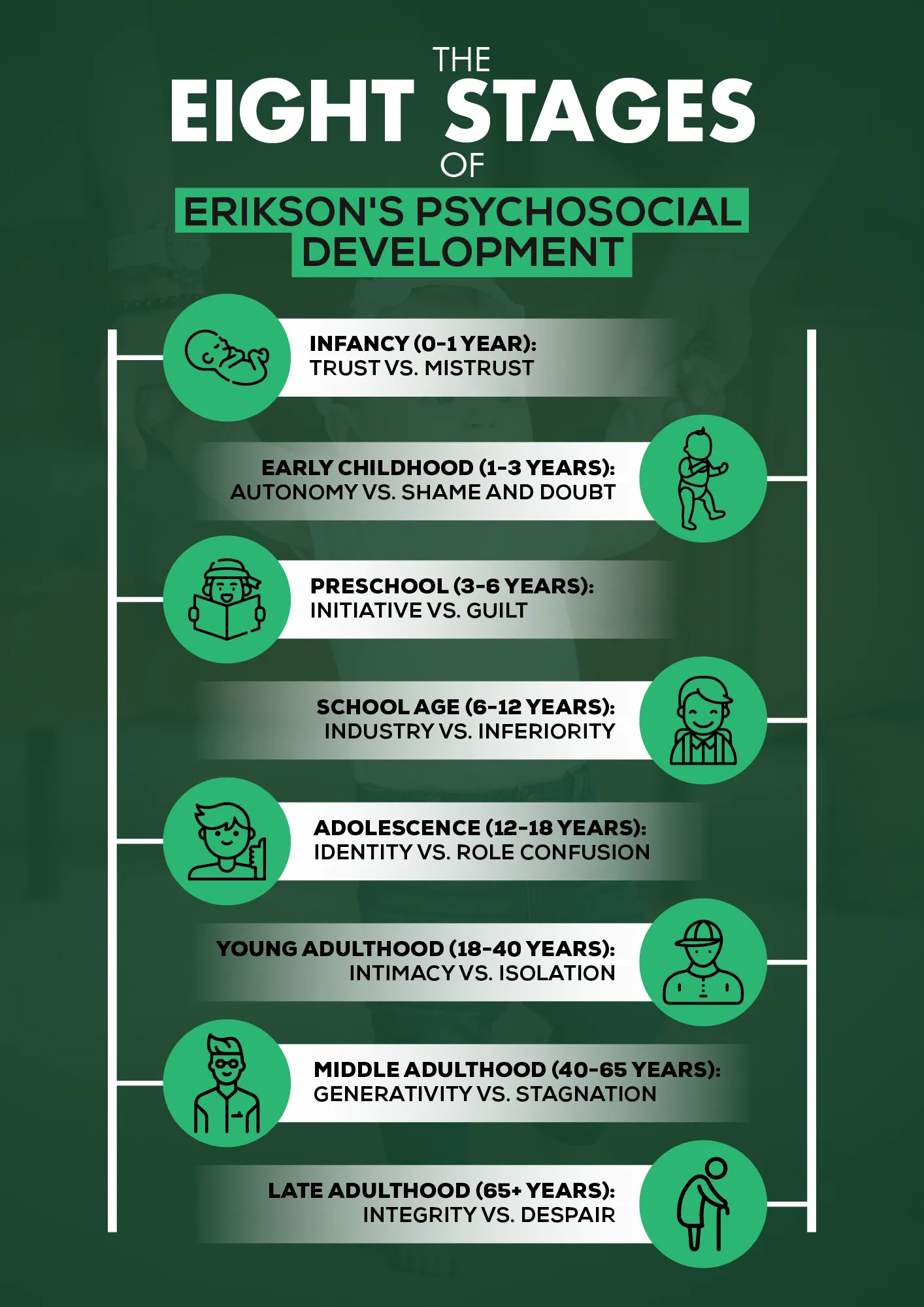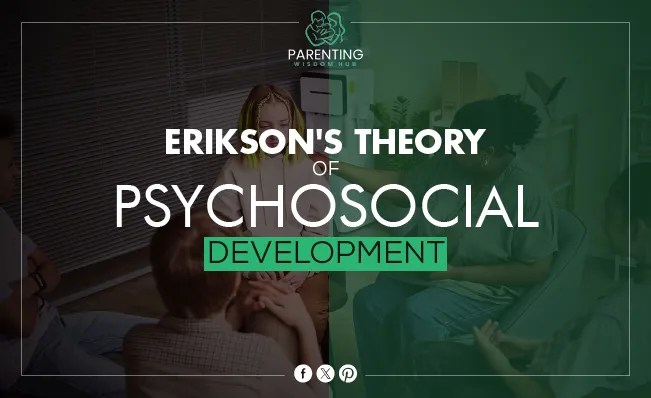Introduction
Psychoanalyst Erik Erikson popularized psychosocial development theory. Based on Freud’s work, “Erikson’s theory of psychosocial development” claims that human development has eight stages, each having a psychosocial conflict that must be resolved for psychological growth. Erikson’s philosophy emphasizes lifelong development, contrasting Freud’s focus on early infancy.
Individuals’ personalities and social relationships develop during psychosocial development. Resolving fundamental problems like trust vs. mistrust or identity vs. role confusion impacts the person’s character and social interactions.
Education, parenting, and mental health require knowledge of psychosocial development. Developmental phases can inform instructional practices and classroom dynamics for educators. They also advise parents on emotional and social development. Unresolved psychosocial problems can be crucial for mental health therapy and support.
Who Was Erik Erikson?
Early Life and Background
Erik Erikson was born June 15, 1902, in Frankfurt, Germany. His mother, Karla Abrahamsen, married paediatrician Dr. Theodor Homberger shortly after his birth, and his biological father fled before his birth. Erikson grappled with Nordic identity in a Jewish community. Early identity concerns affected his studies on psychological development.
Major Influences and Mentors
Erikson began studying psychology with Anna Freud, Sigmund Freud’s daughter, at the Vienna Psychoanalytic Institute. Anna Freud mentored Erikson in psychoanalysis and child development. Sigmund Freud heavily influenced Erikson, although he prioritized social and cultural aspects over sexual ones.
Overview of His Career and Key Works
- Professional Collaboration: With Margaret Mead and Ruth Benedict, Erikson gained cultural and anthropological knowledge.
- Academic Positions: He was hired as a teacher at many well-known schools, including Harvard, Yale, and the University of California, Berkeley.
- Key Publications: His leading publications “Childhood and Society” introduced his eight phases of psychosocial development, and “Identity: Youth and Crisis” explored identity formation.
- Recognition and Awards: Erikson’s psychology work earned him the Pulitzer Prize and National Book Award for “Gandhi’s Truth.”
- Impact on Various Fields: His ideas have significantly impacted the fields of developmental psychology, schooling, parenting, and psychotherapy.
What is Psychosocial Development?
Definition and Explanation of Psychosocial Development
Erik Erikson’s psychosocial development framework describes social experience’s lifetime implications. Erikson prioritizes social forces above internal urges and instincts, unlike psychoanalysis. Eight crucial steps of his approach require overcoming psychosocial conflicts. Conflict resolution builds character and social skills.
The Concept of the Ego and Its Role in Development
Erikson’s theory centers on the ego, the aware self that actively balances personal goals with social expectations.
Ego’s Role in Development
- Balancing Internal and External Demands: Egos are crucial to balancing internal needs with external demands. This balance is essential for navigating psychological issues at each developmental stage.
- Fostering Identity Formation: The ego shapes identity, especially during adolescence ‘Identity vs. Role Confusion.’ A robust ego helps people address questions about who they are and where they fit in society.
- Promoting Psychological Resilience: An ego boosts psychological resilience, helping people face stress, hardship, and challenges. Maintaining mental health and emotional stability requires resilience.
- Cultivating Social Relationships: Through interpersonal dynamics, the ego helps people create and maintain good social connections. Develop empathy, conflict resolution, and communication skills.
- Guiding Moral Development: An ego helps build moral and ethical ideals. It allows people to internalize social rules and ideals, resulting in ethical behavior.
These roles show the ego is essential to psychological growth and a balanced, meaningful life.
Differences Between Psychosocial and Psychosexual Theories
Focus of Development:
- Psychosexual Theories: Freud’s psychosexual theory emphasizes sexual urges and psychological development. Oral, anal, phallic, latency and genital psychosexual stages shape personality, according to Freud.
- Psychosocial Theories: However, Erikson’s psychosocial theory emphasizes lifelong social relationships. Psychosocial conflicts mark eight phases of development.
- Duration of the Developmental Stages:
- Psychosexual Theories: According to Freud, the early years are significant, but his model doesn’t fully explain how people grow up.
- Psychosocial Theories: Erikson’s model includes the whole life, from childhood to late adulthood, showing that significant changes and problems happen throughout a person’s life.
Nature of Conflicts:
- Psychosexual Theories: Sexual and aggressive tendencies drive Freud’s stage conflicts, which must be resolved to form a healthy adult personality.
- Psychosocial Theories: Erikson stresses societal and relational tensions, emphasizing a critical issue (e.g., trust vs. mistrust, integrity vs. despair) that blends social dynamics and human progress.
- Role of the Unconscious vs. Conscious Self:
- Psychosexual Theories: Freud believed unconscious desires and repressed memories shaped development and motivated conduct.
- Psychosocial Theories: Erikson emphasizes the conscious self, particularly the ego, mediating social situations and building resilience.
- End Goals of Development:
- Psychosexual Theories: Freud wanted a healthy and developed sexual identity, with neuroses from unsolved conflicts.
- Psychosocial Theories: Erikson aims to develop values and competence by traversing each psychosocial stage, promoting psychological well-being and societal harmony.
The Eight Stages of Psychosocial Development
Erik Erikson’s psychosocial development theory identifies eight stages from infancy to late adulthood. At each level, children face and hopefully overcome psychosocial problems. These conflicts are resolved to develop virtues that improve psychological and social well-being. Unresolved confrontations can hinder development and make it harder to go on.

Infancy (0-1 year): Trust vs. Mistrust
Trust vs. mistrust dominates the first stage. Infants need caregivers for food and comfort. If caregivers are reliable and affectionate, infants trust. In contrast, unreliable care might generate mistrust.
Early Childhood (1-3 years): Autonomy vs. Shame and Doubt
Children show independence early on. Self-determination vs. guilt and doubt stands out. Children build confidence and capacity when supported in their independence. Overly scolded, constrained, or not allowed to assert themselves may shame and doubt their abilities.
Preschool (3-6 years): Initiative vs. Guilt
During this period, children start activities, plan and complete tasks, and take on new responsibilities. The central tension is initiative vs. guilt. Success in this period inspires initiative, while failure induces shame.
School Age (6-12 years): Industry vs. Inferiority
School introduces youngsters to peers and teachers. Industry vs. inferiority dominates. Children must adapt to new social and academic demands. Failure makes people feel inferior, whereas success makes them feel competent.
Adolescence (12-18 years): Identity vs. Role Confusion
Adolescence is about self-discovery. The main issue is confusion over identity and role. Teens experiment with roles, beliefs, and ideas to find themselves. Failure causes role confusion and a weak sense of self, whereas resolution strengthens it.
Young Adulthood (18-40 years): Intimacy vs. Isolation
Many people struggle to build romantic connections in young adulthood. This stage’s dilemma is intimacy vs. seclusion. Failure leads to loneliness and isolation, while success leads to deep relationships and connections.
Middle Adulthood (40-65 years): Generativity vs. Stagnation
People attempt to build or nurture lasting things in middle adulthood. At this stage, generativity vs. stagnation clash. Success in this stage brings feelings of usefulness and accomplishment, while failure brings shallow world participation.
Late Adulthood (65+ years): Integrity vs. Despair
Late adulthood is a time of reflection. The primary battle is integrity vs. despair. Those who see their lives as successful and meaningful acquire integrity, whereas those who see them as unproductive or regretful may despair.
Key Concepts in Erikson’s Theory
The Role of Social Interaction in Development
As you go through the different stages of growth, Erikson’s theory stresses the importance of interacting with other people.
- Influence of Caregivers: Early on, a child’s trust and sense of independence are shaped by the dependability, love, and care they receive from their caregivers.
- Peer Relationships: Kids in school learn how to be responsible by interacting with teachers and other kids.
- Role Exploration: Teenagers try different social roles and identities to develop a strong sense of who they are.
- Romantic Connections: Young adults want deep and meaningful relationships and want to be independent.
- Generativity: In middle age, people focus on making a difference in the world through family, work, and community service.
- Reflection and Legacy: As people get older, they think about their lives and the important people they’ve met, which gives them a sense of character.
The Importance of Cultural Context
Cultural norms and societal standards can also affect Erikson’s stages, changing how different people move through each stage.
- Cultural Values: Independence, marriage, job success, and respecting elders are all important in different cultures.
- Societal Structures: Family, schools, and neighborhood groups are all examples of social institutions that help people grow and learn.
- Economic Factors: Economic stability and opportunities can affect the experiences and results of each stage of development.
- Historical Periods: The period in which a person lives can affect how they grow as things happen in history and society change.
By understanding these basic ideas, you can better understand how broad Erikson’s psychological theory is and how it can be used throughout life.
The Concept of a “Crisis” at Each Stage
Erikson defines “crisis” as a developmental turning point that must be resolved. Each psychosocial stage has a specific crisis that must be addressed for healthy psychological growth. These crises’ main points:
- Biological and Social Demands: A person’s biological and social needs at a particular stage of life shape each problem.
- Potential for Growth: Crisis resolution promotes personal growth and the development of hope, will, and knowledge.
- Risk of Stagnation: Crisis resolution failure can cause stagnation and make it hard to deal with future growth problems.
- Lifespan Perspective: Erikson’s theory recognizes that societal roles and expectations shape development throughout life.
- Individual and Contextual Factors: Individual traits and social circumstances affect how each crisis is handled.
How Crises Shape Personality
Crisis resolutions in Erikson’s stages affect personality. Important considerations include:
- Core Virtues: Resolving each crisis helps people build essential virtues for future stages. Trust inspires optimism, but autonomy empowers willpower.
- Adaptive vs. Maladaptive Outcomes: Crisis resolution improves mental health by facilitating adaptation. Failure causes maladaptive outcomes, impeding personal growth.
- Influence on Behavior: How situations are handled affects how people act, make decisions, and interact with each other in the future.
- Continuity and Change: Each stage builds on the previous one, although unsolved crises can be revisited and resolved later in life, allowing for growth.
- Interconnected Stages: Each stage is connected to the one before it, so how one crisis is handled can affect how other crises are handled.
- Contextual Sensitivity: The socio-cultural context in which an individual navigates various crises can change the experience and consequences, demonstrating Erikson’s model’s plasticity.
The Importance of Successfully Resolving Crises for Healthy Development
Overcoming psychological crises at each stage supports healthy growth and well-being. Every choice shapes the next. Childhood autonomy vs. shame and uncertainty crises boost subsequent self-confidence. Having a balanced personality helps with future concerns. Healthy growth improves identity and purpose, fostering enjoyment and meaningful relationships.
Application of Erikson’s Theory
Practical Applications in Education
Teaching and student interactions can be improved by understanding Erikson’s psychosocial development stages. The main points:
- Early Childhood Education: Teachers can help students trust and care for themselves by making the classroom safe and caring.
- Middle School Interventions: Teachers can urge students to work hard by giving them tasks and group projects to complete.
High School Programs: Role models and self-expression in schools can help shape identities.
Implications for Parenting
This is another way that Erikson’s theory can help parents:
- Building Trust: Ensure that caring is consistent and reliable while the baby is young.
- Encouraging Independence: In a safe place, letting kids explore and make decisions is essential.
- Supporting Identity: Have honest conversations with teens about their beliefs, goals, and hopes for the future.
Relevance in Therapy and Counseling
Erikson’s model can help therapists do the following:
- Identify Stagnation: Find out what problems haven’t been fixed in your clients’ lives and work to fix them.
- Guide Growth: Help your clients overcome past mistakes and build their skills for the next steps.
- Foster Integrity: Help older people find peace by getting them to think and accept themselves.
Influence on Workplace Dynamics
Employers and management can use Erikson’s ideas to:
- Enhance Productivity: Give your workers chances to be creative by getting them involved in projects that matter.
- Nurture Relationships: Encourage a culture at work that values deep, meaningful relationships between coworkers.
- Support Career Development: Offer your employees ongoing learning and growth chances to keep them from getting stuck.
Criticisms and Limitations
Common Criticisms of Erikson’s Theory
- Western-Centric Perspective: Kritikers says Erikson’s theory is affected by Western norms and may not adequately explain the development of people from varied cultural backgrounds.
- Gender Bias: Some experts feel the theory’s concentration on traditional gender roles fails to address modern women and non-binary people’s developmental phases and crises.
- Lack of Emphasis on Biological Factors: Erikson’s stages may miss biological and genetic influences on development due to their focus on social and psychological issues.
- Sequential Rigidity: The theory’s structured stages may not reflect real-world heterogeneity in individual development and the likelihood of many crises.
- Empirical Validation: Some critics point out that real-world proof does not support Erikson’s stages, saying that the theory is more philosophical than scientifically proven.
- Focus on Crises: Crisis focus may overwhelm positive and neutral development experiences, distorting human growth.
Limitations of the Theory in Modern Psychology
- Cultural Sensitivity: Erikson’s theory might not fully cover the subtleties of cultural sensitivity needed in today’s diverse cultures, which could make it less valuable.
- Inclusive Representation: Updates should include oppressed populations’ experiences and developmental trajectories, which core psychological theories generally overlook.
- Integration of Modern Research: Recent developmental psychology, neurology, and allied research could strengthen Erikson’s stages.
- Practical Applications: The theory provides valuable insights, but its direct application in education, therapy, and parenting might be better defined and backed by facts.
- Dynamic Nature of Development: Erikson’s stages were sequential, but modern psychology views development as a dynamic and continual process. Including this perspective may deepen understanding.
How Contemporary Research Has Expanded on Erikson’s Ideas
- Neuroscientific Insights: Modern neuroscience has revealed Erikson’s stages by studying how brain development impacts psychosocial growth. Brain research on social behavior and emotional control supports Erikson’s views.
- Cross-Cultural Studies: Psychosocial development has been studied throughout cultures to uncover universal similarities and cultural differences. This research has broadened Erikson’s stages to include diverse experiences.
- Lifespan Perspective: Developmental psychologists have studied how life events and transitions, such as employment shifts and retirement, impact identity and psychological well-being beyond Erikson’s phases.
- Integration with Attachment Theory: Erikson’s and attachment theories have improved our understanding of early childhood development. Attachment types and infancy experiences now influence psychological consequences later in life.
- Positive Psychology: Positive psychology has rebalanced Erikson’s stages by emphasizing resilience, optimism, life satisfaction, and crises.
- Empirical Validation: Current research aims to validate Erikson’s stages objectively. Longitudinal studies compare people’s development to Erikson’s stages.
Key Takeaways
- Erikson’s Theory in Practice: Erikson’s stages of psychosocial development help mental health professionals identify and resolve developmental client concerns in therapy and counseling.
- Cultural and Gender Considerations: The theory’s Western focus and gender prejudices have drawn criticism, emphasizing the need for more inclusive and culturally sensitive approaches.
- Biological and Empirical Limitations: Critics say Erikson’s theory neglects biological variables and needs further empirical validation of his stages.
- Dynamic Developmental Processes: Modern psychology recognizes development as a dynamic, ongoing process. It challenges Erikson’s stages’ sequential nature and recommends integrating current research.
- Expanding Research: Neuroscience, cross-cultural research, attachment theory, and positive psychology have enhanced Erikson’s ideas and provided further empirical evidence.
- Modern Applications: Erikson’s theory must be more relevant and effective in addressing present developmental issues by explicitly defining and improving its practical applications in therapy, education, and parenting.


